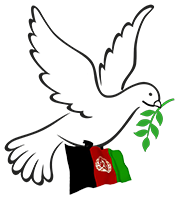Azam Ahmed, a Times correspondent and former bureau chief in Afghanistan, made repeated trips to areas in the country that had once been off-limits to foreigners.
The New York Times
The Talib looked as ragged as his outpost, a trailer banked on a snowy mountain pass. Holes were bored into its sides to ventilate a sputtering wood stove.
Upon seeing foreigners, the Talib, with an unkempt beard and layers of ill-fitting sweaters, ordered us out of the car.
For more than an hour, my colleague Bryan Denton and I waited on the trailer floor as he reviewed our documents. Beside him, two guards slept beneath heaped blankets. It smelled as if they had been there a while.
The Talib asked questions: Why had we come to Afghanistan? Where were we going? What were we doing?
We told him what we had told so many other Taliban members. I covered the war as a New York Times correspondent and bureau chief. Now I wanted to see the war from another perspective, to see what lessons — and secrets — the United States left behind.
I began to wonder if our luck had run out. Bryan turned to me and frowned.
The guard began recording us with his phone, sending our hearts racing. Almost no recording of a foreigner in similar circumstances has ended well this century.
But the Talib had other things on his mind.
“Can you please indicate that you have been treated well, and that no harm has come to you?” he asked, presumably collecting evidence in case we complained to his superiors.
One of the stranger things about our travels was how freely the Taliban allowed us to explore. For most of the war, they had shot, bombed or abducted any foreigner they could find. Times colleagues had been kidnapped or killed.
Yet no matter where we were, if we produced our paperwork, we were granted access to places that few foreigners had ventured in nearly two decades: the other side of the war.
We spent nights in half-constructed buildings, in barren deserts and perched on the edge of raging rivers. We interviewed hundreds of people and surveyed more than 1,000 others about war crimes committed by American allies.
I often think of this moment in relation to Vietnam. In that war, decades passed before the United States engaged its former enemy. By then, parts of history were lost.
Here is what we learned.
The Taliban didn’t win so much as the U.S. lost.
Time and again, we found, the Americans set the stage for their own defeat well before the Taliban marched to power in August 2021.
The United States empowered warlords and criminals to conduct the war on its behalf, individuals who inspired so much hatred that their very presence became a Taliban recruiting tool. This propensity was embodied by no one more than Lt. Gen. Abdul Raziq, the police chief of Kandahar Province.
The Americans turned allies into enemies.
By blindly trampling into places they did not understand, the Americans seeded hatred. Errant airstrikes not only killed innocents. They killed American allies — the very people who supported them the most.
In the rugged region of Nuristan, we traced the origins of one of the deadliest assaults on American soldiers. We discovered that American troops had created the enemies that they feared the most — and in places that they never needed to be.
The Taliban declared an amnesty, and an end to poppy.
After the war, the Taliban declared that, no matter which side you had been on, the fighting was over. Former enemies were prohibited from settling scores — and for the most part people listened.
The Taliban has also declared an end to poppy, seemingly accomplishing one of Washington’s key war goals.
The district, Bakwa, had once been a barely inhabited stretch of desert. But thanks to American efforts to eradicate poppy — and the opium trade — people had flocked to the desert district, where the Taliban embraced them.
The war was decided long before it was over.
President Biden blames the Afghan Army for crumbling so quickly. President-elect Donald J. Trump blames Mr. Biden.
Both versions ignore the history in places like the north of Afghanistan, a region where values like democracy and women’s rights might have actually lasted.
There, the United States empowered militias to fight the Taliban. Instead, these groups tortured, kidnapped and massacred civilians. They created such hatred toward the Afghan government and its American allies that people turned to the Taliban.
Before the Americans withdrew, the Taliban were already negotiating their rise to power.
Azam Ahmed is international investigative correspondent for The Times. He has reported on Wall Street scandals, the War in Afghanistan and violence and corruption in Mexico, Central America and the Caribbean.
 Afghanistan Peace Campaign
Afghanistan Peace Campaign